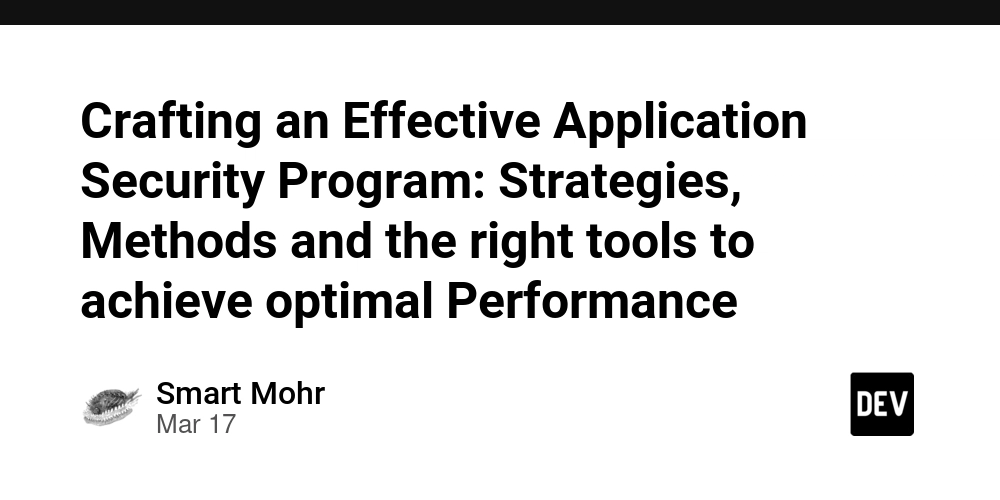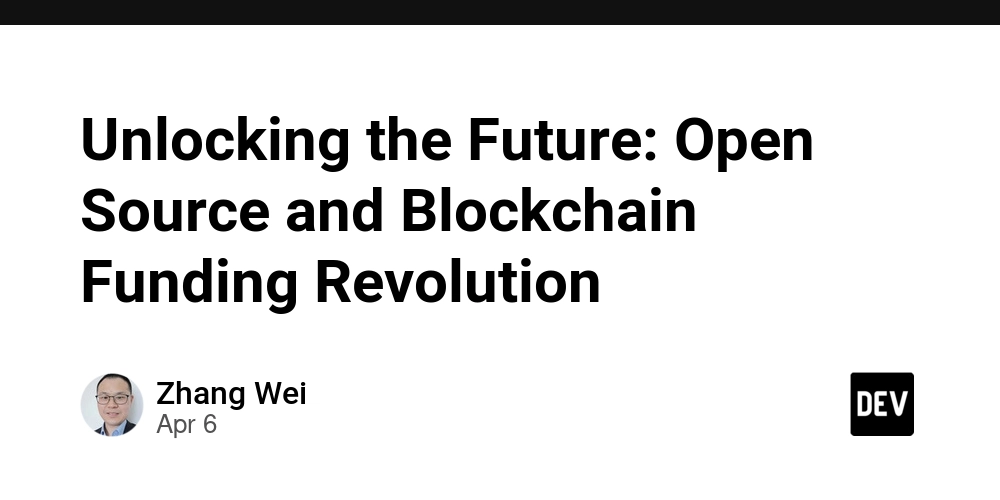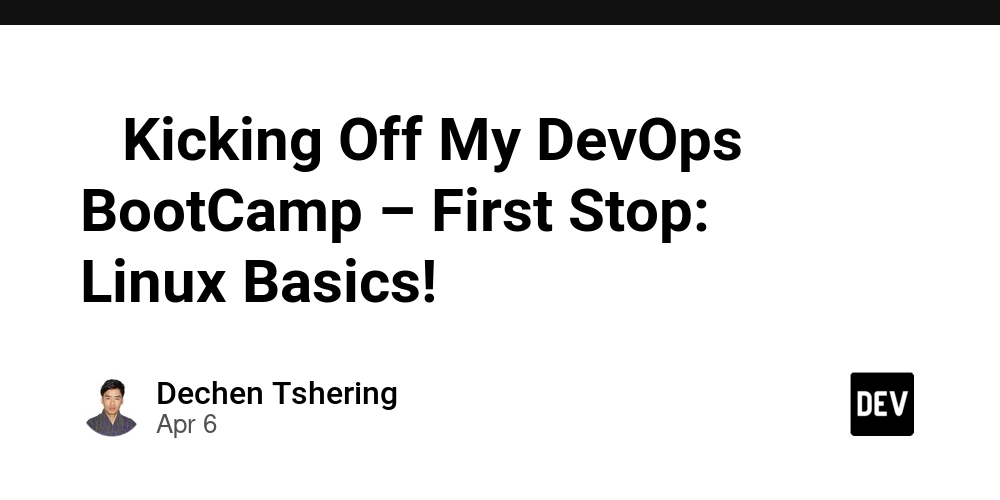Crafting an Effective Application Security Program: Strategies, Methods and the right tools to achieve optimal Performance
Understanding the complex nature of contemporary software development requires a thorough, multi-faceted approach to security of applications (AppSec) that goes far beyond the simple scanning of vulnerabilities and remediation. The constantly evolving threat landscape, coupled with the rapid pace of development and the growing intricacy of software architectures, calls for a holistic, proactive approach that seamlessly incorporates security into each phase of the development process. This comprehensive guide delves into the key components, best practices, and cutting-edge technology that comprise a highly effective AppSec program, which allows companies to secure their software assets, mitigate the risk of cyberattacks, and build a culture of security first development. At the heart of the success of an AppSec program lies an important shift in perspective, one that recognizes security as a crucial part of the process of development rather than an afterthought or a separate endeavor. This paradigm shift necessitates the close cooperation between security teams, developers, and operations personnel, removing silos and instilling a feeling of accountability for the security of applications they design, develop, and manage. DevSecOps allows organizations to integrate security into their development workflows. This means that security is taken care of in all phases beginning with ideation, development, and deployment up to continuous maintenance. This collaborative approach relies on the development of security standards and guidelines that provide a structure for secure programming, threat modeling and management of vulnerabilities. The policies must be based on industry best practices, including the OWASP Top Ten, NIST guidelines, as well as the CWE (Common Weakness Enumeration) in addition to taking into consideration the specific requirements and risk profiles of the specific application and the business context. learn more These policies can be written down and made accessible to all parties, so that organizations can implement a standard, consistent security strategy across their entire portfolio of applications. It is vital to fund security training and education courses that help operationalize and implement these guidelines. These programs should be designed to provide developers with the information and abilities needed to write secure code, spot vulnerable areas, and apply best practices for security during the process of development. Training should cover a broad array of subjects including secure coding methods and the most common attack vectors, to threat modelling and secure architecture design principles. Organizations can build a solid base for AppSec by fostering an environment that encourages ongoing learning and giving developers the tools and resources they need to integrate security into their daily work. Security testing is a must for organizations. and verification processes as well as training programs to spot and fix vulnerabilities before they can be exploited. autonomous agents for appsec This is a multi-layered process that incorporates static as well as dynamic analysis techniques along with manual penetration tests and code review. In the early stages of development static Application Security Testing tools (SAST) can be used to identify vulnerabilities such as SQL Injection, Cross-SiteScripting (XSS) and buffer overflows. Dynamic Application Security Testing (DAST) tools on the other hand can be used to simulate attacks against running applications, identifying vulnerabilities that may not be detectable with static analysis by itself. Although these automated tools are necessary in identifying vulnerabilities that could be exploited at the scale they aren't a panacea. Manual penetration tests and code reviews performed by highly skilled security experts are essential in identifying more complex business logic-related vulnerabilities that automated tools may miss. Combining automated testing and manual verification allows companies to gain a comprehensive view of their application's security position. They can also prioritize remediation strategies based on the level of vulnerability and the impact it has on. To further enhance the effectiveness of the effectiveness of an AppSec program, companies should take into consideration leveraging advanced technology such as artificial intelligence (AI) and machine learning (ML) to augment their security testing and vulnerability management capabilities. AI-powered tools are able to analyze huge quantities of application and code data, identifying patterns and anomalies that may indicate potential security issues. They can also learn from previous vulnerabilities and attack techniques, continuously improving their abilities to identify and prevent emerging security threats. One of the most promising applications of AI within AppSec is the use of code property graphs (CPGs) to enable greater accuracy and efficiency in vulnerab

Understanding the complex nature of contemporary software development requires a thorough, multi-faceted approach to security of applications (AppSec) that goes far beyond the simple scanning of vulnerabilities and remediation. The constantly evolving threat landscape, coupled with the rapid pace of development and the growing intricacy of software architectures, calls for a holistic, proactive approach that seamlessly incorporates security into each phase of the development process. This comprehensive guide delves into the key components, best practices, and cutting-edge technology that comprise a highly effective AppSec program, which allows companies to secure their software assets, mitigate the risk of cyberattacks, and build a culture of security first development.
At the heart of the success of an AppSec program lies an important shift in perspective, one that recognizes security as a crucial part of the process of development rather than an afterthought or a separate endeavor. This paradigm shift necessitates the close cooperation between security teams, developers, and operations personnel, removing silos and instilling a feeling of accountability for the security of applications they design, develop, and manage. DevSecOps allows organizations to integrate security into their development workflows. This means that security is taken care of in all phases beginning with ideation, development, and deployment up to continuous maintenance.
This collaborative approach relies on the development of security standards and guidelines that provide a structure for secure programming, threat modeling and management of vulnerabilities. The policies must be based on industry best practices, including the OWASP Top Ten, NIST guidelines, as well as the CWE (Common Weakness Enumeration) in addition to taking into consideration the specific requirements and risk profiles of the specific application and the business context. learn more These policies can be written down and made accessible to all parties, so that organizations can implement a standard, consistent security strategy across their entire portfolio of applications.
It is vital to fund security training and education courses that help operationalize and implement these guidelines. These programs should be designed to provide developers with the information and abilities needed to write secure code, spot vulnerable areas, and apply best practices for security during the process of development. Training should cover a broad array of subjects including secure coding methods and the most common attack vectors, to threat modelling and secure architecture design principles. Organizations can build a solid base for AppSec by fostering an environment that encourages ongoing learning and giving developers the tools and resources they need to integrate security into their daily work.
Security testing is a must for organizations. and verification processes as well as training programs to spot and fix vulnerabilities before they can be exploited. autonomous agents for appsec This is a multi-layered process that incorporates static as well as dynamic analysis techniques along with manual penetration tests and code review. In the early stages of development static Application Security Testing tools (SAST) can be used to identify vulnerabilities such as SQL Injection, Cross-SiteScripting (XSS) and buffer overflows. Dynamic Application Security Testing (DAST) tools on the other hand can be used to simulate attacks against running applications, identifying vulnerabilities that may not be detectable with static analysis by itself.
Although these automated tools are necessary in identifying vulnerabilities that could be exploited at the scale they aren't a panacea. Manual penetration tests and code reviews performed by highly skilled security experts are essential in identifying more complex business logic-related vulnerabilities that automated tools may miss. Combining automated testing and manual verification allows companies to gain a comprehensive view of their application's security position. They can also prioritize remediation strategies based on the level of vulnerability and the impact it has on.
To further enhance the effectiveness of the effectiveness of an AppSec program, companies should take into consideration leveraging advanced technology such as artificial intelligence (AI) and machine learning (ML) to augment their security testing and vulnerability management capabilities. AI-powered tools are able to analyze huge quantities of application and code data, identifying patterns and anomalies that may indicate potential security issues. They can also learn from previous vulnerabilities and attack techniques, continuously improving their abilities to identify and prevent emerging security threats.
One of the most promising applications of AI within AppSec is the use of code property graphs (CPGs) to enable greater accuracy and efficiency in vulnerability identification and remediation. CPGs provide a rich, symbolic representation of an application's codebase, capturing not just the syntactic architecture of the code but as well as the complicated connections and dependencies among different components. AI-driven tools that leverage CPGs can perform an analysis that is context-aware and deep of the security of an application. They can identify weaknesses that might have been overlooked by traditional static analyses.
Additionally, CPGs can enable automated vulnerability remediation with the use of AI-powered repair and transformation methods. In order to understand the semantics of the code, as well as the nature of the identified vulnerabilities, AI algorithms can generate targeted, specific fixes to address the root cause of the issue rather than merely treating the symptoms. This method does not just speed up the process of remediation, but also minimizes the chance of breaking functionality or creating new vulnerability.
Another crucial aspect of an effective AppSec program is the integration of security testing and validation into the ongoing integration and continuous deployment (CI/CD) pipeline. Automating security checks, and including them in the build-and-deployment process enables organizations to identify security vulnerabilities early, and keep their entry into production environments. This shift-left approach to security enables quicker feedback loops and reduces the amount of time and effort needed to identify and remediate issues.
To reach this level of integration, organizations must invest in the proper infrastructure and tools to enable their AppSec program. Not only should the tools be utilized for security testing as well as the platforms and frameworks which allow integration and automation. Containerization technologies such Docker and Kubernetes can play a vital part in this, offering a consistent and reproducible environment to conduct security tests while also separating the components that could be vulnerable.
In addition to technical tooling efficient communication and collaboration platforms can be crucial in fostering security-focused culture and allow teams of all kinds to work together effectively. Jira and GitLab are problem tracking systems that help teams to manage and prioritize vulnerabilities. Tools for messaging and chat like Slack and Microsoft Teams facilitate real-time knowledge sharing and communications between security experts.
The effectiveness of any AppSec program isn't solely dependent on the technology and tools employed and the staff who support it. The development of a secure, well-organized culture requires leadership buy-in along with clear communication and an effort to continuously improve. By instilling a sense of shared responsibility for security, encouraging dialogue and collaboration, and supplying the required resources and assistance, organizations can establish a climate where security isn't just a box to check, but an integral part of the development process.
In order for their AppSec programs to continue to work over time, organizations need to establish significant metrics and key-performance indicators (KPIs). These KPIs help them keep track of their progress and identify improvements areas. These metrics should be able to span the entire lifecycle of applications, from the number of vulnerabilities discovered in the development phase to the time taken to remediate security issues, as well as the overall security level of production applications. These indicators can be used to demonstrate the benefits of AppSec investment, identify trends and patterns, and help organizations make decision-based decisions based on data regarding where to focus on their efforts.
To stay on top of the ever-changing threat landscape, as well as new practices, businesses require continuous education and training. It could involve attending industry conferences, taking part in online training courses, and collaborating with outside security experts and researchers to keep abreast of the latest technologies and trends. In fostering a culture that encourages ongoing learning, organizations can assure that their AppSec program is flexible and resilient in the face new challenges and threats.
It is essential to recognize that app security is a continual process that requires constant investment and commitment. As new technologies develop and practices for development evolve organisations must continuously review and update their AppSec strategies to ensure that they remain relevant and in line with their goals for business. Through adopting a continuous improvement mindset, encouraging collaboration and communications, and leveraging advanced technologies such CPGs and AI companies can develop an efficient and flexible AppSec programme that will not only safeguard their software assets, but help them innovate in a rapidly changing digital environment.
learn more









































































































































































![[The AI Show Episode 142]: ChatGPT’s New Image Generator, Studio Ghibli Craze and Backlash, Gemini 2.5, OpenAI Academy, 4o Updates, Vibe Marketing & xAI Acquires X](https://www.marketingaiinstitute.com/hubfs/ep%20142%20cover.png)



























































































































![[DEALS] The Premium Learn to Code Certification Bundle (97% off) & Other Deals Up To 98% Off – Offers End Soon!](https://www.javacodegeeks.com/wp-content/uploads/2012/12/jcg-logo.jpg)


![From drop-out to software architect with Jason Lengstorf [Podcast #167]](https://cdn.hashnode.com/res/hashnode/image/upload/v1743796461357/f3d19cd7-e6f5-4d7c-8bfc-eb974bc8da68.png?#)









































































































.png?#)
































_Christophe_Coat_Alamy.jpg?#)
 (1).webp?#)


































































































![iPhone 17 Pro Won't Feature Two-Toned Back [Gurman]](https://www.iclarified.com/images/news/96944/96944/96944-640.jpg)
![Tariffs Threaten Apple's $999 iPhone Price Point in the U.S. [Gurman]](https://www.iclarified.com/images/news/96943/96943/96943-640.jpg)








































































































































